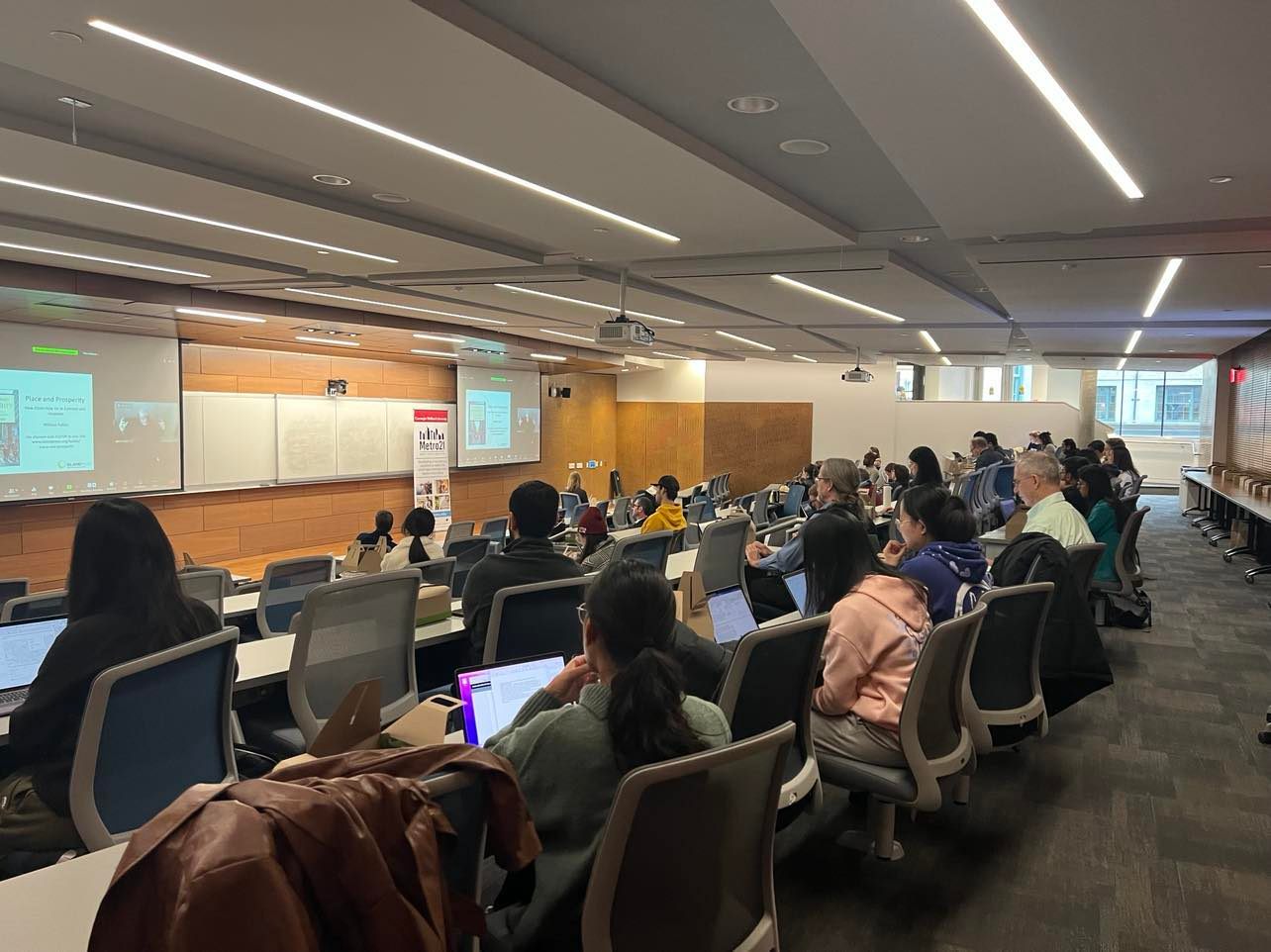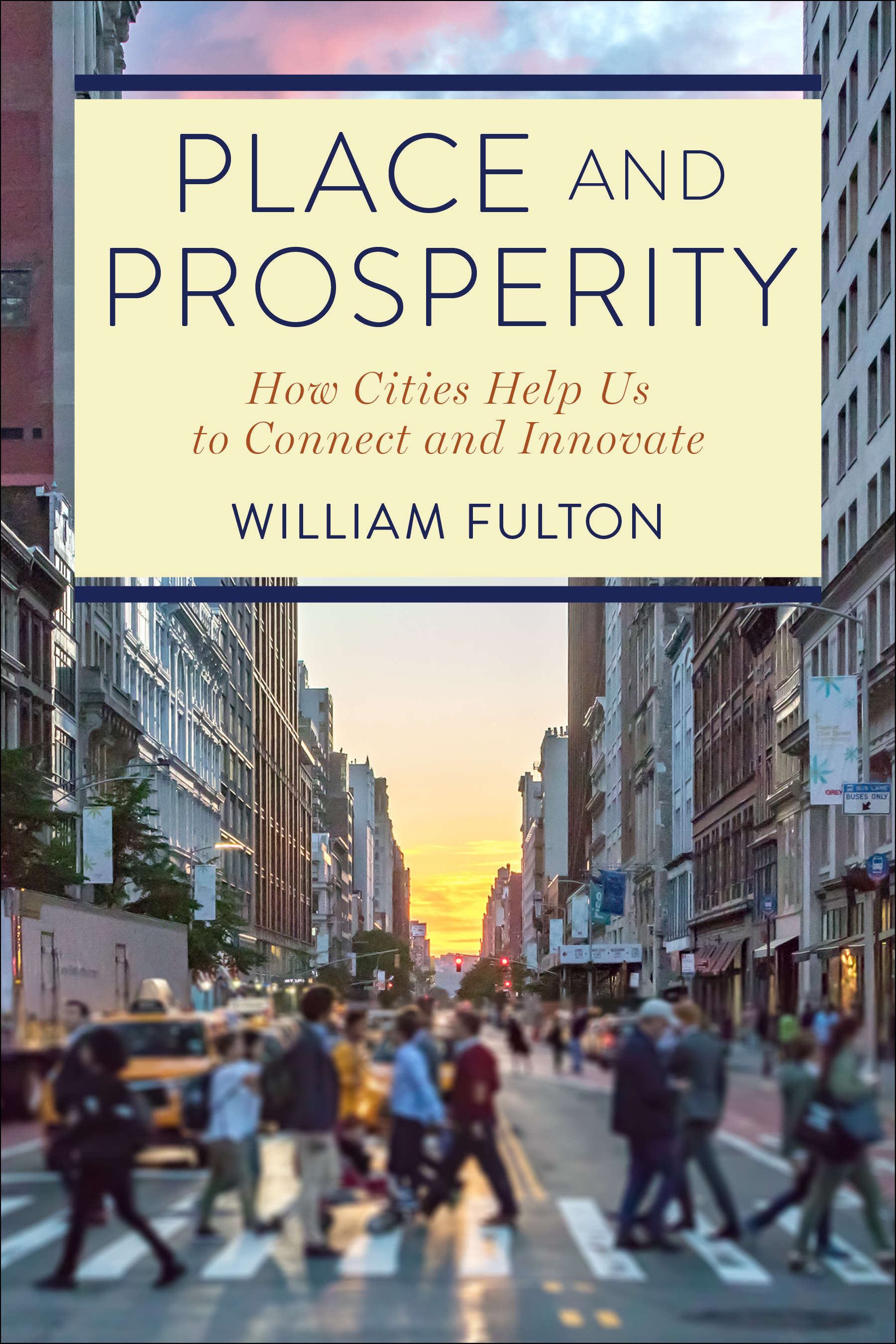
Metro21 Lunch and Learn with Bill Fulton
“Cities are resilient. They’ve been buffeted over the decades by White flight, decay, urban renewal, unequal investment, increasingly extreme weather events, and now the worst pandemic in a century, and they’re still going strong.”
On December 7th, Metro21 hosted renowned urban planner Bill Fulton for a Lunch and Learn session discussing his new book Place and Prosperity: How Cities Help Us to Connect and Innovate. Formerly the Mayor of Ventura, California, Bill is considered one of the leaders of the “Smart Growth” movement and currently serves as a Senior Advisor to PFM Management and Budget Counseling as well as a Fellow at the Terner Center for Housing Innovation at UC Berkley.
Bill began the event by speaking about his experience growing up in Auburn, NY – a small industrial town of about 30,000 people with a thriving downtown, walkable neighborhoods, and a strong sense of community. As he explained, the vibrancy of his hometown was a result of the local prosperity brought about by private industries. He sees this trend continue today, as towns with strong private employment continue to support thriving urban cores, while those that have lost their employers and factories struggle with vacancies and loss of population. According to Bill, “the most basic reason cities exist is to bring people together… to facilitate commerce.”
Most of the event, however, was spent as a question-and-answer session, some highlights of which are presented below:
Q: What are your thoughts on Richard Florida’s assertion that to improve prosperity cities should invest in amenities to attract talented residents?
A: As cities compete with each other for talent more and more, quality of place has become more important than ever. This is because more industries are dispersed across multiple regions than previously, and more cities’ economies rely on their ability to attract technology workers. There is also no question that these kind of investments in amenities serve a dual purpose of attracting new residents and also improving the quality of life for a city’s existing residents.
Q: What programs do you see across federal agencies and departments that you like?
A: The Department of Transportation has a program that I really like to reconnect communities by tearing down urban highways, and I would love to see it have some big wins. There are also a host of programs across the IRA that can help to create neighborhood resiliency hubs that can provide emergency power, flood relief shelter, and other services. Local government needs to work across domains to make all of these programs work on a community level.
Q: Prior to COVID, getting a new job often forced people to relocate. Recently, though, the rise of remote work has enabled people to stay where they live even with new jobs. What do you think the consequences of that will be?
A: The most important trend right now that we don’t know the outcome of is the impact of remote work. Most office work will likely be hybrid rather than completely remote, which will still require people to remain in proximity to their jobs. However, more people will be able to live places that they want to live in, rather than where they have to live for their job. This should lead to greater prosperity and inflow of residents in second-tier cities like Pittsburgh, as people can work for companies in large cities like San Francisco and New York while living in more affordable places that offer great amenities. During COVID, the largest cities in the US lost lots of population, while the second-tier cities gained population.
Q: As a follow-up, many people are talking about converting office space into housing. Is that a good idea?
A: Office-dominated business districts will have to accommodate a much wider range of activities to attract people in the future. We no longer have to go to an office every day to sit there and do work – we now do it to specifically interact with each other, which is irreplaceable. I think you will see more hotels than apartments because that conversion is easier, but you will still see a lot of apartment conversions. Old office buildings have smaller floor plates, which make it easier to convert into residential units, while newer office buildings have larger floor plates and will have a much harder time being converted to residential. Having said that, there will be a lot of office buildings that do not have an easy conversion use case, and that is going to be a big problem.

